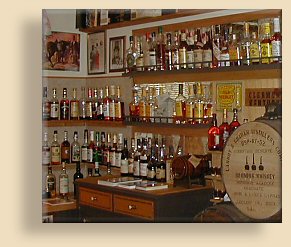It Wasn't Always Bourbon,
Y'know...
The whiskey of the twenty-first century is whiskey that has
been pretty much cut loose
from the stereotypes of the 1900's. Such ideas as that bourbon
can only be made in Kentucky; that American whiskey can only be made from
corn or rye; that any good whiskey must be aged for at least whatever number of
years the current tax laws allow; that whiskey is only made to be drunk
neat. The beginning of the current century is exploding with innovative
spirits made from "new" grains, made in new ways, and targeted at new
audiences.
The whiskey of the twentieth century was mostly the whiskey of a relatively small part of Kentucky. Known as Bourbon,
some say because of the area with which it was first identified, it was a
whiskey made mostly from corn and is still what people usually think of when
they order American whiskey. Although most people don't realize it,
bourbon can be made anywhere within the United States, but before the
2000s nearly all of
it came from Kentucky.
The whiskey of the nineteenth century
was the whiskey of a similarly small area in western Pennsylvania. Known
as Monongahela, from the river that runs through much of that country, it
was a whiskey made mostly from rye. It didn't taste exactly like the rye
whiskey we know today, and it probably didn't taste anything like the
blended Canadian whisky that Americans tend to call "rye". It became
popular enough that the style was copied in other places, such as eastern
Pennsylvania, Delaware, Virginia, and especially Maryland, where a variant
developed with characteristics of its own. In 1810, when Kentucky produced
2,220,773 gallons of distilled spirits, Pennsylvania barreled up no less
than 6,552,284 gallons, most of which was prime Monongahela rye. There are
only a few rye whiskeys made today, and all are from Kentucky. They're
more closely related to the Maryland variety than to the west
Pennsylvanian. And until this millennium not a single commercial whiskey distillery remained
operating in Pennsylvania or Maryland.
The whiskey of the eighteenth century --
such as there was of it -- was the whiskey made in Virginia, Maryland,
Delaware, New Jersey, the Carolinas, and Georgia. It was mostly distilled
for home consumption but some was produced commercially. It, too, was
mostly rye. Corn, or rather maize, didn't take off in popularity until the
Kentuckians worked their magic on it much later. In fact, long before
Indian maize was used for making whiskey, colonial and early American
distillers understood the eastern European word "korn", meaning "grain",
to refer to rye. That was the kind of whiskey George Washington distilled
and it was very different indeed from the bourbons and ryes we know today.
And by 2002, Old Potrero is not alone. Rodney Facemire in
southern West Virginia began producing legal clear, unaged rye whiskey and bottling it
at a less-threatening 80 proof. He was instrumental in getting laws passed
that allowed small distilleries to exist legally for the first time since
Prohibition, and much of the current environment for artisan distillers
can be directly or indirectly traced to his operation at Kirkland Winery
in Summerville. His Isaiah
Morgan Rye tastes remarkably like young cognac. It's also probably a
lot closer to the sort of rye whiskey that George Washington's customers were drinking than the
125+ proof Fritz Maytag distills it at.
The whiskey makers in the Monongahela River valley made the
same kind of whiskey. And they sent their whiskey to the same east coast
markets for sale. But by the time it had been stored in warehouses and
then traveled the long route from there to civilization it had spent
months in barrels and picked up a flavor and a deep reddish-brown color
that became characteristic of the type.
But our web site isn't about tasting whiskey. It's about
visiting the places where it is (or at least was) made. And that's what
we're about to do. There's a lot packed into these pages, because there's
a lot more than meets the eye. In fact, there's very little to meet the
eye anymore, and we will find ourselves spending more time trying to find
some of these sites than actually visiting them. Our journey into the
misty, half-secret realm of whiskeys-that-are-no-more will have us
traveling backwards in direction and every which way through time as we
visit the sites where some of Pennsylvania's and Maryland's proudest
distillers of fine American Rye once fired their stills and drove bungs
into their barrels. Along the way, we'll visit areas where unthinkable
ideas of independence and freedom were formed and would later be put to
the test. George Washington really did sleep here. In fact he owned quite
a bit of it. There was whiskey being made here then, by farmers and by
millers, and we'll visit the site where farmer (and Revolutionary War
hero) Israel Shreve operated his small distillery and grist mill in the
1790's. Carefully restored to its original condition, it's one of the
earliest whiskey distilleries in Pennsylvania.
But it wasn't always bourbon, y'know...
Despite the contrivances of abstentionists to connect their
viewpoint with our proud Puritan forebears, the fact is that the colonists
of British North America drank beverage alcohol. They drank a LOT of
beverage alcohol. In fact, by today's standards their average per capita
consumption would be considered quite alarming. In the early 1700's the
average annual per capita consumption of alcohol was over three and a half
gallons (pure alcohol; that would be over seven gallons at 100 proof), or
about double today's rate. About a third was in the form of beer or wine,
the rest was distilled spirits.
And hardly a drop of that was whiskey.
Rum was by far the preferred spirit, with fruit brandy
(especially peach, apple, and pear brandy) making up most of the rest.
As settlement expanded westward toward the mountains
commercial areas and towns began to form, and with them rose a market for
locally-obtainable whiskey. In those days, before the later temperance
movements had created a different sentiment, whiskey was regarded as a
necessary article of food, no different from beef or bread. And about the
same time that butcher shops, bakeries, and candlestick manufacturers
appeared, so did commercial whiskey distilleries.
For one thing, farmers were quickly discovering the
advantages of having a portion (sometimes a large portion) of their crop
converted to whiskey for transport to market. As the frontier spilled over
the Alleghenies into what would later become western Pennsylvania that
advantage became a requirement. Transporting their grain to New Orleans
down the Ohio and Mississippi rivers was not yet feasible, due both to the
distance and the hostility of the Spanish who claimed rights to that area.
The only existing road leading east across the mountains to market was
extremely difficult and dangerous. Their surplus produce must rot unless
it could be manufactured into spirits which could be consumed at home or
carried to a market.
Typically not long after a grist mill was built to serve
area farmers a distillery would be set up, sometimes as a separate
business or often as another service offered by the miller. The farmers
would store a portion of their grain (which might also be a service
offered by the larger area mills) and have enough of the rest ground into
meal or flour as needed to sustain his family for the year. The rest would
be mashed and distilled into whiskey. And in a barter-based society with
an overabundance of agricultural products, whiskey served as an excellent
medium of exchange.
Which, along with several miles of twisty and confusing
back-country roads, brings us to Perryopolis, on the Youghiogheny river.
Click here and
we'll visit the basic farmer's distillery operated by Col. Israel Shreve
in the 1790s..
.
American
Whiskey:
![]()
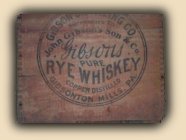 IN
FACT it didn't even start out being Whiskey at all. But
distilled alcoholic beverages were an integral part of America right from
the very beginning, and the "Spirit" of freedom in the New World was far
more than just a figure of speech. The founding of the American colonies and
their transformation into a free and independent new nation is richly
intertwined with the history of American whiskey. You cannot possibly
increase your understanding of the one without adding to your appreciation
of the other. And so we decided to spend some time exploring a few of the
sites among the hills and valleys where it all began.
IN
FACT it didn't even start out being Whiskey at all. But
distilled alcoholic beverages were an integral part of America right from
the very beginning, and the "Spirit" of freedom in the New World was far
more than just a figure of speech. The founding of the American colonies and
their transformation into a free and independent new nation is richly
intertwined with the history of American whiskey. You cannot possibly
increase your understanding of the one without adding to your appreciation
of the other. And so we decided to spend some time exploring a few of the
sites among the hills and valleys where it all began.
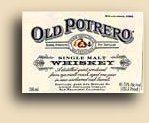 For
one thing, it wasn't reddish brown, because it wasn't aged in barrels. In
fact, it wasn't aged much more than however long it took to get it home
from the distillery. Fritz Maytag, the gentleman who brews Anchor Steam
Beer in San Francisco makes a rye whiskey that he believes comes as close
as possible to duplicating that whiskey. He calls it
Old
Potrero, also for the location -- in this case a hill in San
Francisco. By federal law, he can't even label it "Rye Whiskey", because
the law defines rye whiskey as a completely different product. It's
labeled "Single Malt Whiskey", as if it were a kind of scotch (he does
bottle a product that meets the legal definition, and is labeled "Rye",
but it isn't quite the same). Old Potrero is hard to find and costs a lot
because Fritz doesn't make much, but if you want to understand the roots
of American whiskey you should have a bottle. Prepare to be surprised at
the flavor; it probably won't be your favorite whiskey. But then again, it
might. John (the "Jaye" part of "L and J Dot Com") loves it. But then John
also loves pure, unaged corn whiskey too.
For
one thing, it wasn't reddish brown, because it wasn't aged in barrels. In
fact, it wasn't aged much more than however long it took to get it home
from the distillery. Fritz Maytag, the gentleman who brews Anchor Steam
Beer in San Francisco makes a rye whiskey that he believes comes as close
as possible to duplicating that whiskey. He calls it
Old
Potrero, also for the location -- in this case a hill in San
Francisco. By federal law, he can't even label it "Rye Whiskey", because
the law defines rye whiskey as a completely different product. It's
labeled "Single Malt Whiskey", as if it were a kind of scotch (he does
bottle a product that meets the legal definition, and is labeled "Rye",
but it isn't quite the same). Old Potrero is hard to find and costs a lot
because Fritz doesn't make much, but if you want to understand the roots
of American whiskey you should have a bottle. Prepare to be surprised at
the flavor; it probably won't be your favorite whiskey. But then again, it
might. John (the "Jaye" part of "L and J Dot Com") loves it. But then John
also loves pure, unaged corn whiskey too.
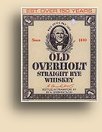 An
example of Monongahela-type rye whiskey can be found pretty easily; just
look for Old Overholt in the bottle with Abraham Overholt himself glaring
sternly at you from the label. It's not really Monongahela rye. It's made
in Kentucky. By Fortune Brands, who also make a rye under their Jim Beam
label. But it doesn't taste like Jim Beam Rye, or any of the other fine
Kentucky rye whiskeys. It's flavor is quite different, and very
reminiscent of the real article, distilled in Pennsylvania at the Broad
Ford of the Youghiogheny river. and if you mix a little of your Old
Potrero with it, you'll have a pretty good idea of what that whiskey might
have really tasted like. There's also a Canadian rye whiskey, Lot No. 40,
that is directly descended from the original Monongahela types, and also
has that very distinctive flavor.
An
example of Monongahela-type rye whiskey can be found pretty easily; just
look for Old Overholt in the bottle with Abraham Overholt himself glaring
sternly at you from the label. It's not really Monongahela rye. It's made
in Kentucky. By Fortune Brands, who also make a rye under their Jim Beam
label. But it doesn't taste like Jim Beam Rye, or any of the other fine
Kentucky rye whiskeys. It's flavor is quite different, and very
reminiscent of the real article, distilled in Pennsylvania at the Broad
Ford of the Youghiogheny river. and if you mix a little of your Old
Potrero with it, you'll have a pretty good idea of what that whiskey might
have really tasted like. There's also a Canadian rye whiskey, Lot No. 40,
that is directly descended from the original Monongahela types, and also
has that very distinctive flavor.
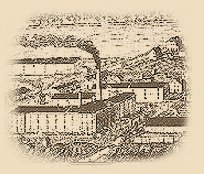 We'll
also visit Pennsylvania's last commercial whiskey distillery, which closed
in the late 1980's. We'll sift through the rubble and broken bricks of
what was once Old Overholt's distillery at Broad Ford, and we'll marvel at
the fact that Broad Ford itself, nearly a hundred fifty years before that,
had played an important role in America's settlement west of the Allegheny
Mountains. We'll hike along a twisting, narrow trail through the woods to
visit a small pile of broken stones and twisted copper equipment marking
where King's Maryland Rye was being made nearly a century ago. We'll drive
from the site of a pre-Civil War Monongahela distillery, to that of a
Prohibition-era moonshiner's outdoor mountain still, and on to the empty
shells of a huge facility in Baltimore where Four Roses Whiskey was made
during the twentieth century, and Baltimore Pure Rye in the nineteenth.
We'll
also visit Pennsylvania's last commercial whiskey distillery, which closed
in the late 1980's. We'll sift through the rubble and broken bricks of
what was once Old Overholt's distillery at Broad Ford, and we'll marvel at
the fact that Broad Ford itself, nearly a hundred fifty years before that,
had played an important role in America's settlement west of the Allegheny
Mountains. We'll hike along a twisting, narrow trail through the woods to
visit a small pile of broken stones and twisted copper equipment marking
where King's Maryland Rye was being made nearly a century ago. We'll drive
from the site of a pre-Civil War Monongahela distillery, to that of a
Prohibition-era moonshiner's outdoor mountain still, and on to the empty
shells of a huge facility in Baltimore where Four Roses Whiskey was made
during the twentieth century, and Baltimore Pure Rye in the nineteenth.
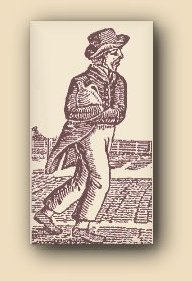 And
we'll get there by traveling over the first federally-paved "2-lane
interstate highway" for automobiles in America, the Lincoln Highway, as
well as the first federally-built road across America, period... the
National Pike.
And
we'll get there by traveling over the first federally-paved "2-lane
interstate highway" for automobiles in America, the Lincoln Highway, as
well as the first federally-built road across America, period... the
National Pike.
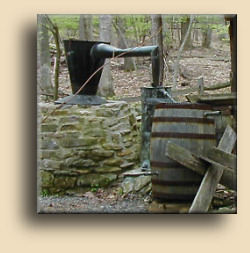 Whiskey
was a homespun farm product, usually produced and consumed by the same
farmers who made their own clothing and furniture. In Catoctin Park, near the Camp David presidential retreat in Maryland, the
National Park
Service has set up a display on the former site of a notorious (and large)
moonshine operation once known as Blue Blazes. That had been a
25,000-gallon operation that was raided and destroyed in July of 1929, but
the still equipment you can visit on the banks of Distillery Run today is
quite different from that setup. The little 50-gallon Blue Blazes still on
display may not do justice to the operation for which the site is named,
but it is an excellent example
of the type of still an 18th century farmer would have for converting his grain crops to
transportable liquid. Before the 1791 Excise Tax, just about every farm
had its own whiskey still.
Click here and
we'll take a walk through the Maryland woods and visit this one...
Whiskey
was a homespun farm product, usually produced and consumed by the same
farmers who made their own clothing and furniture. In Catoctin Park, near the Camp David presidential retreat in Maryland, the
National Park
Service has set up a display on the former site of a notorious (and large)
moonshine operation once known as Blue Blazes. That had been a
25,000-gallon operation that was raided and destroyed in July of 1929, but
the still equipment you can visit on the banks of Distillery Run today is
quite different from that setup. The little 50-gallon Blue Blazes still on
display may not do justice to the operation for which the site is named,
but it is an excellent example
of the type of still an 18th century farmer would have for converting his grain crops to
transportable liquid. Before the 1791 Excise Tax, just about every farm
had its own whiskey still.
Click here and
we'll take a walk through the Maryland woods and visit this one...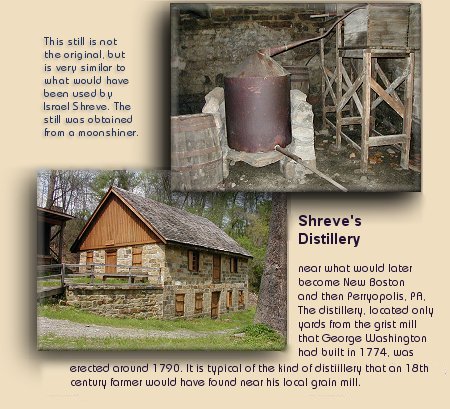
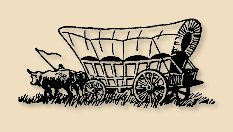 For
the most part, only those products could be taken over the mountains as
had feet of their own. A horse, it was said, could carry only four bushels
of grain across the mountains; but he could take twenty-four bushels when
converted into liquor.
For
the most part, only those products could be taken over the mountains as
had feet of their own. A horse, it was said, could carry only four bushels
of grain across the mountains; but he could take twenty-four bushels when
converted into liquor.
